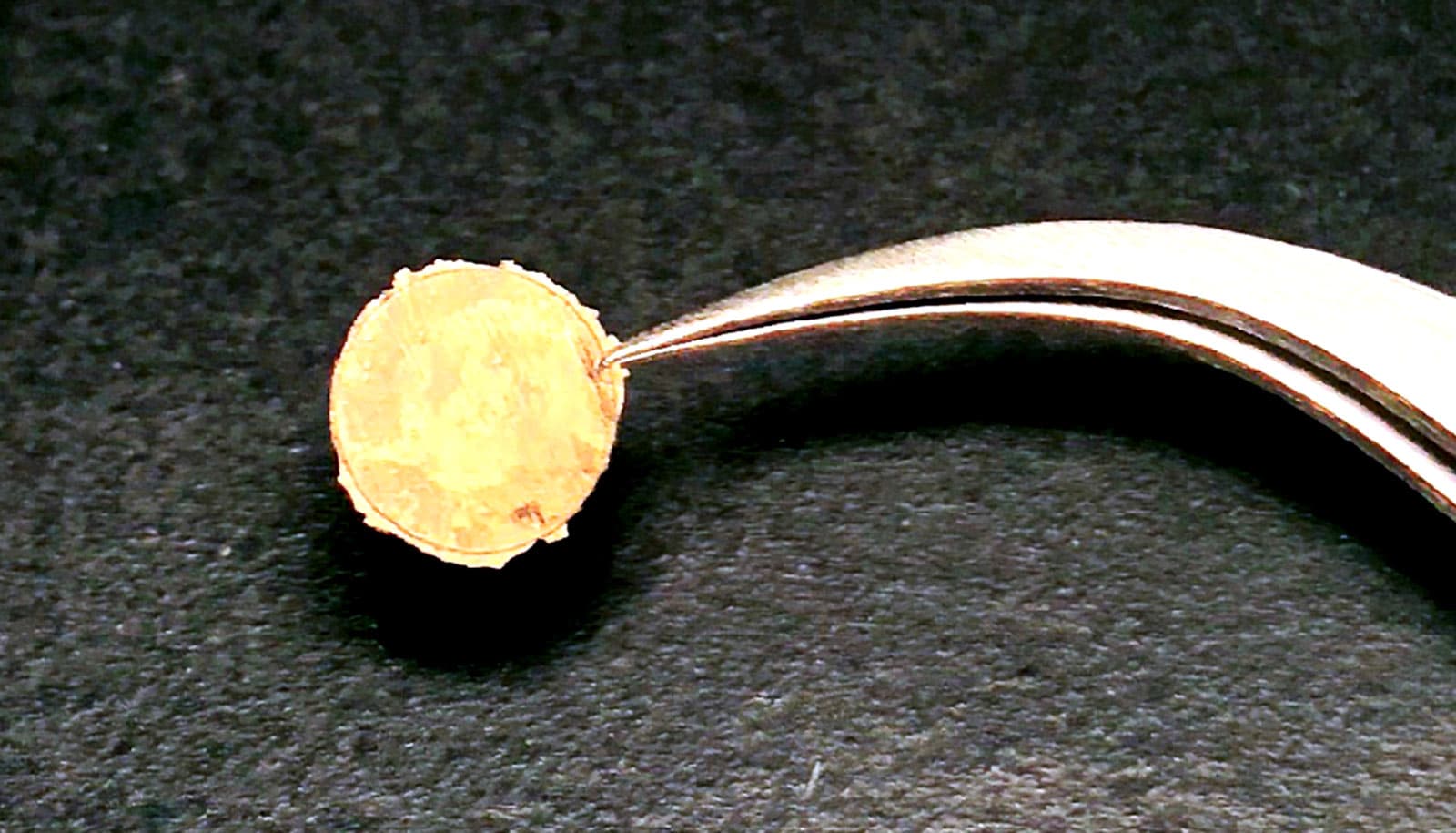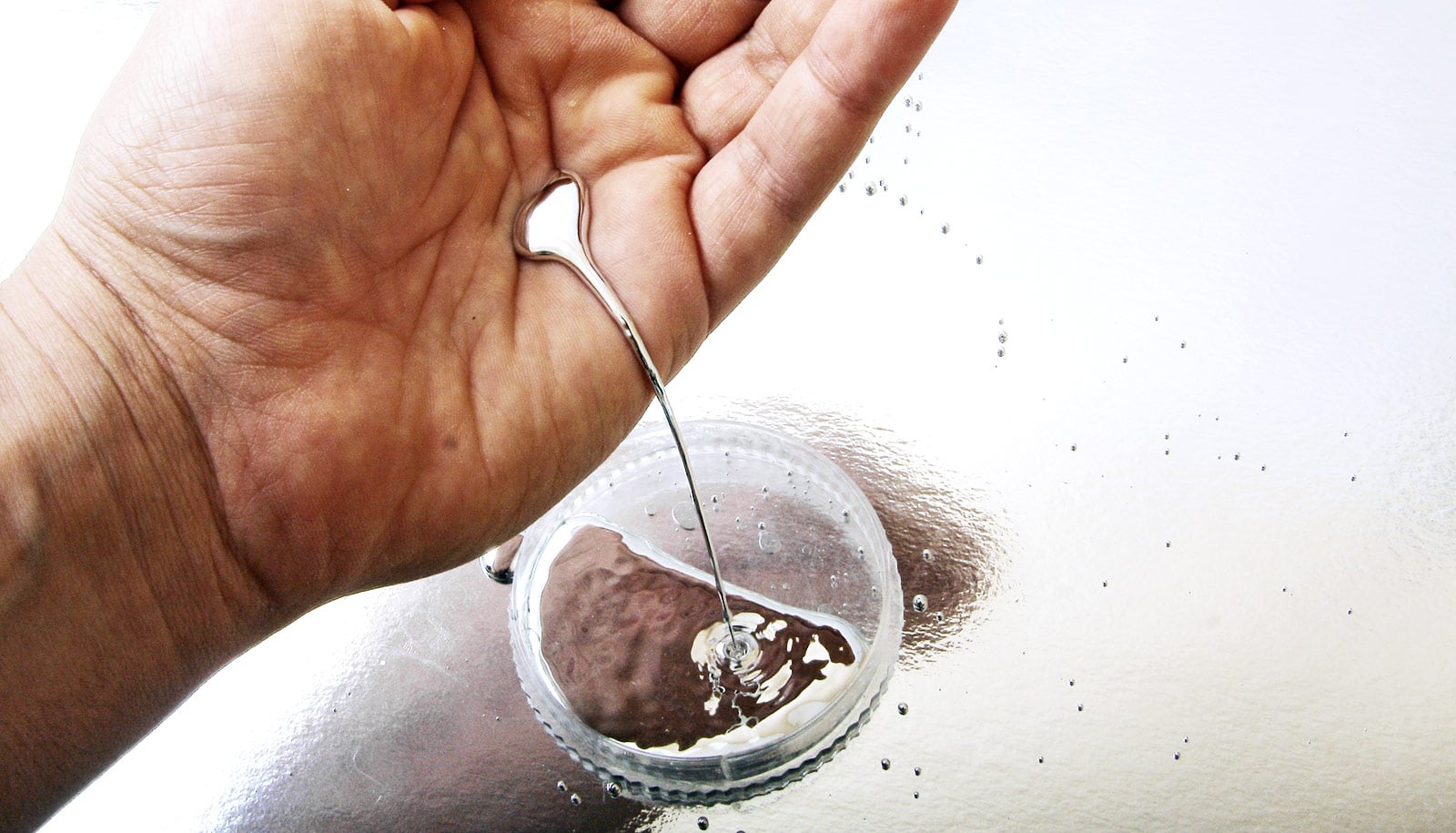Remarkable things happen when a “squishy” compound of manganese and sulfide (MnS2) is compressed in a diamond anvil, researchers report.
“This is a new type of charge transfer mechanism, and so from a science community point of view this is very, very exciting. We are showing remarkable physical transformations over a very, very short range of parameters, in this case pressure,” says Ashkan Salamat, associate professor of physics at the University of Nevada, Las Vegas.
For example, as the pressure increases, MnS2, a soft insulator, transitions into a metallic state and then into an insulator again, the researchers describe in a paper published in Physical Review Letters.
“The fact that this material goes from an insulator to a metal and back to an insulator is very rare.”
“Metals usually remain metals; it is highly unlikely that they can then be changed back to an insulator,” says Ranga Dias, assistant professor of mechanical engineering and of physics, and astronomy at the University of Rochester. “The fact that this material goes from an insulator to a metal and back to an insulator is very rare.”
Moreover, the transitions are accompanied by unprecedented decreases in resistance and volume across an extremely narrow range of pressure change—all occurring at about 80 degrees Fahrenheit. The relatively low temperature enhances the chances that the metal transition process might eventually be harnessed for technology, Salamat says.
In previous papers in Nature and Physical Review Letters, Dias and Salamat set new benchmarks toward achieving superconductivity at room temperatures. A common denominator of their work is exploring the “remarkably bizarre” ways transition metals and other materials behave when they are paired with sulfides, and then compressed in a diamond cell anvil.
“The new phenomena we are reporting is a fundamental example of responses under high pressure—and will find a place in physics textbooks,” Salamat says. “There’s something very intriguing about how sulfur behaves when it is attached to other elements. This has led to some remarkable breakthroughs.”
The breakthroughs the Dias and Salamat labs have achieved involve compressing mere picoliters of material—about the size of a single inkjet particle.
Spin and pressure
Underlying the transitions described in this paper are the way the spin states (angular momentum) of individual electrons interact as pressure is applied, Dias and Salamat explain.
When MnS2 is in its normal insulator state, electrons are primarily in unpaired, “high spin” orbitals, causing atoms to actively bounce back and forth. This results in the material having higher resistance to an electrical charge because there is less free space for individual electrons trying to pass through the material.
But as pressure is applied—and the material is compressed toward a metallic state—the electron orbitals “start to see each other, immediately come toward each other, and pairs of electrons start linking up as one,” Salamat says.
This opens up more space for individual electrons to move through the material—so much so that resistance drops dramatically by 8 orders of magnitude, as pressure is increased from 3 gigapascals (435,000 psi) to 10 gigapascals.
This is a relative “nudge” compared to the 182 to 268 gigapascals required for superconducting materials. “Given the small range of pressure involved, a drop in resistance of this magnitude is really enormous,” Dias says.
Low resistance is maintained even in the final phase—when the MnS2 reverts to an insulator—because the electrons remain in a “low spin” state.
Basic science, big potential
As often occurs with new discoveries in basic science, the possible applications have yet to be explored. However, Salamat says, a transition metal which, with a relatively small amount of strain, can jump from one state to another—at room temperature, no less—is likely to be useful.
“You could imagine having a logic switch or writing hard disk, where a very, very small permutation in strain or voltage could make something jump from one electronic state to another. New versions of flash memory, or solid state memory, could permutate and take on a new approach using these types of materials,” Salamat says.
“You can do quite aggressive maneuvers to drive these materials at 300 kelvin, making them potentially useful for technology.”
Additional coauthors are from Argonne National Laboratory; the University of Bourgogne; the University of Nevada, Las Vegas; and the University of Rochester.
The National Science Foundation and the Department of Energy supported the research. The UNLV National Supercomputing Institute provided computational resources, and portions of the work were performed at Argonne National Laboratory and University of Bourgogne.
Source: University of Rochester


